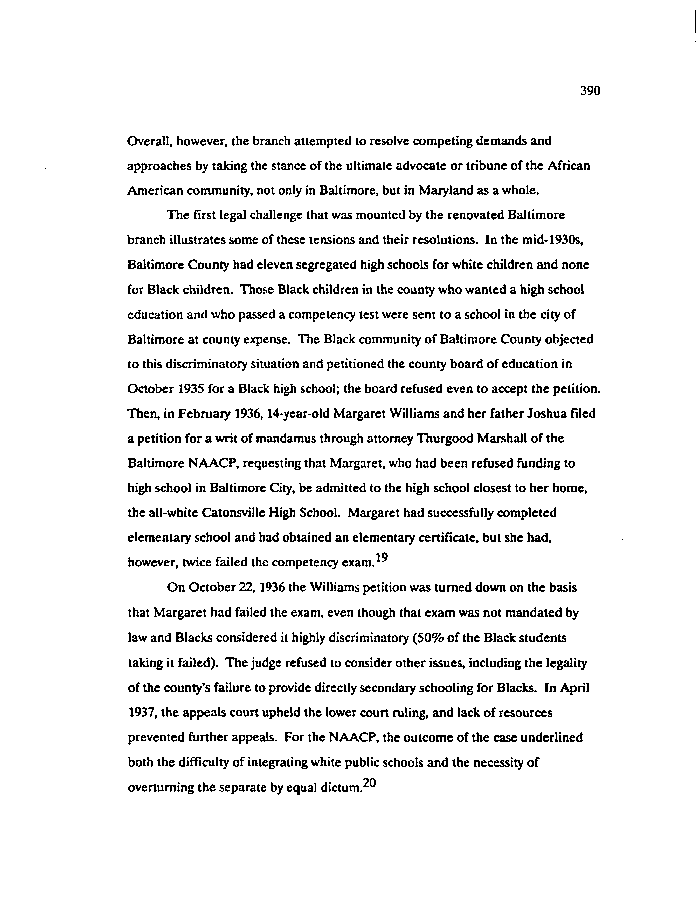|
390
Overall, however, the branch attempted to resolve competing demands and
approaches by taking the stance of the ultimate advocate or tribune of the African
American community, not only in Baltimore, but in Maryland as a whole.
The first legal challenge that was mounted by the renovated Baltimore
branch illustrates some of these tensions and their resolutions. In the mid-193Os,
Baltimore County had eleven segregated high schools for white children and none
for Black children. Those Black children in the county who wanted a high school
education and who passed a competency test were sent to a school in the city of
Baltimore at county expense. The Black community of Baltimore County objected
to this discriminatory situation and petitioned the county board of education in
October 1935 for a Black high school; the board refused even to accept the petition.
Then, in February 1936,14-year-old Margaret Williams and her father Joshua filed
a petition for a writ of mandamus through attorney Thurgood Marshall of the
Baltimore NAACP, requesting that Margaret, who had been refused funding to
high school in Baltimore City, be admitted to the high school closest to her home,
the all-white Catonsville High School. Margaret had successfully completed
elementary school and had obtained an elementary certificate, but she had,
however, twice failed the competency exam.
On October 22,1936 the Williams petition was turned down on the basis
that Margaret had failed the exam, even though that exam was not mandated by
law and Blacks considered it highly discriminatory (50% of the Black students
taking it failed). The judge refused to consider other issues, including the legality
of the county's failure to provide directly secondary schooling for Blacks. In April
1937, the appeals court upheld the lower court ruling, and lack of resources
prevented further appeals. For the NAACP, the outcome of the case underlined
both the difficulty of integrating white public schools and the necessity of
overturning the separate by equal dictum.^
|

